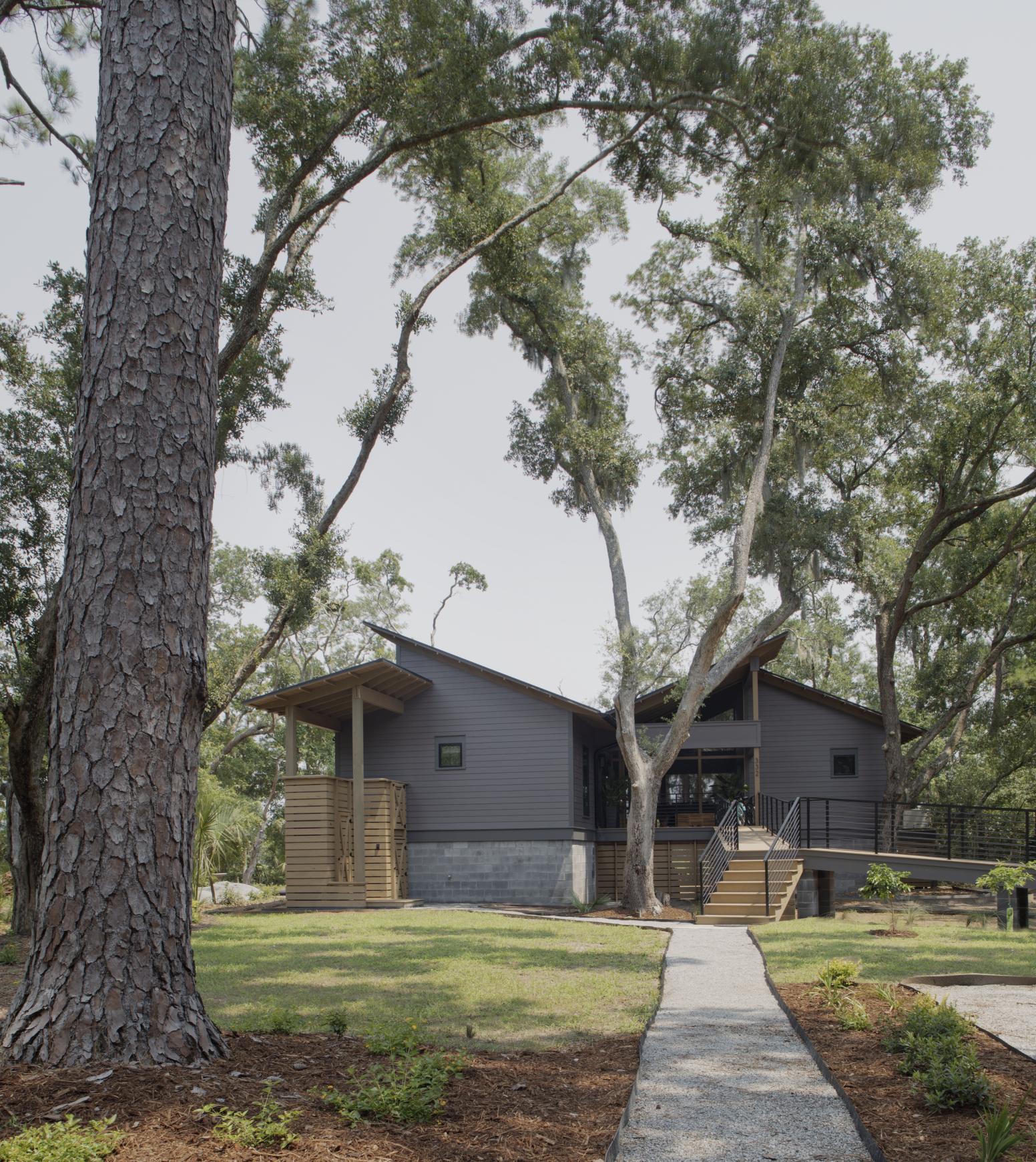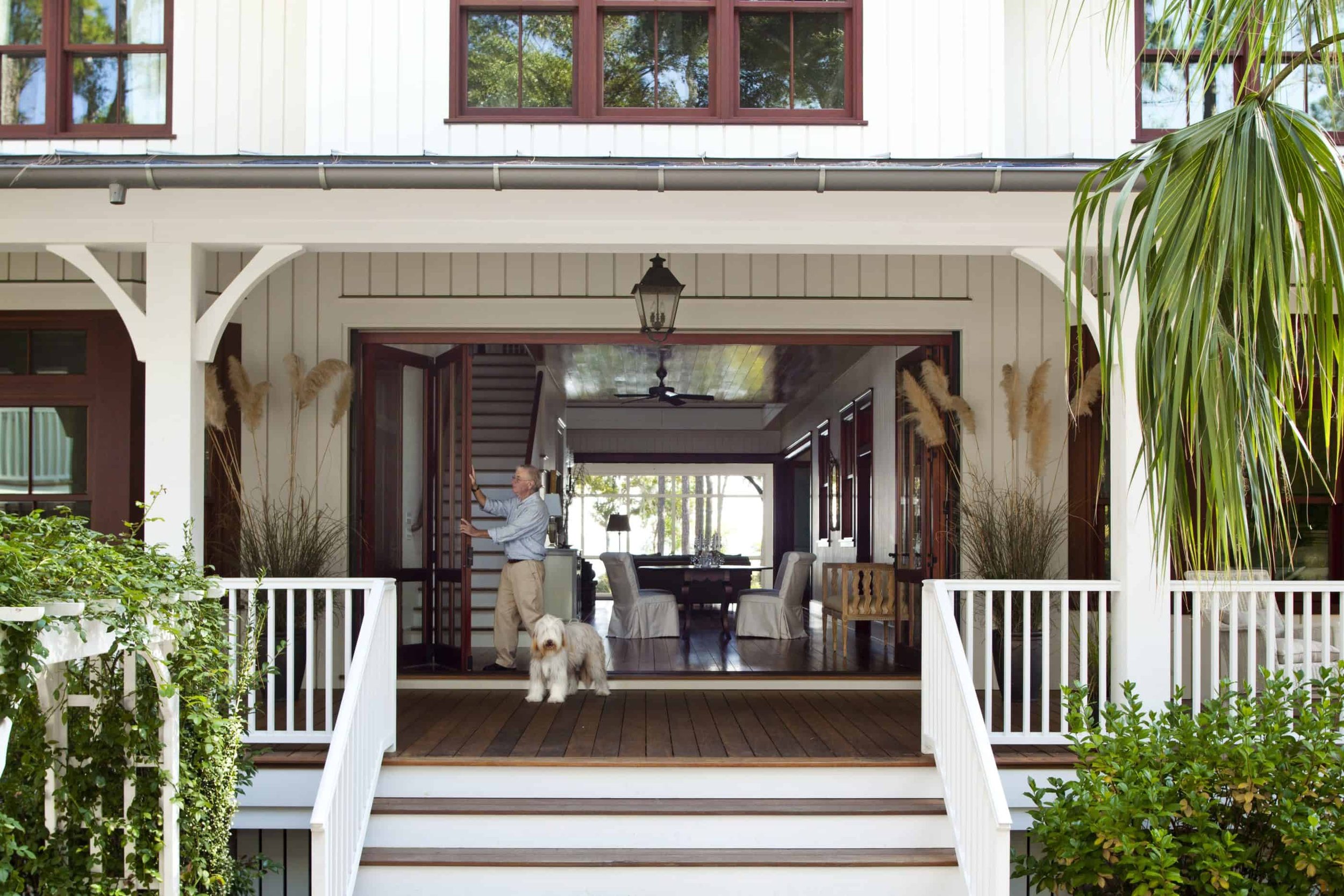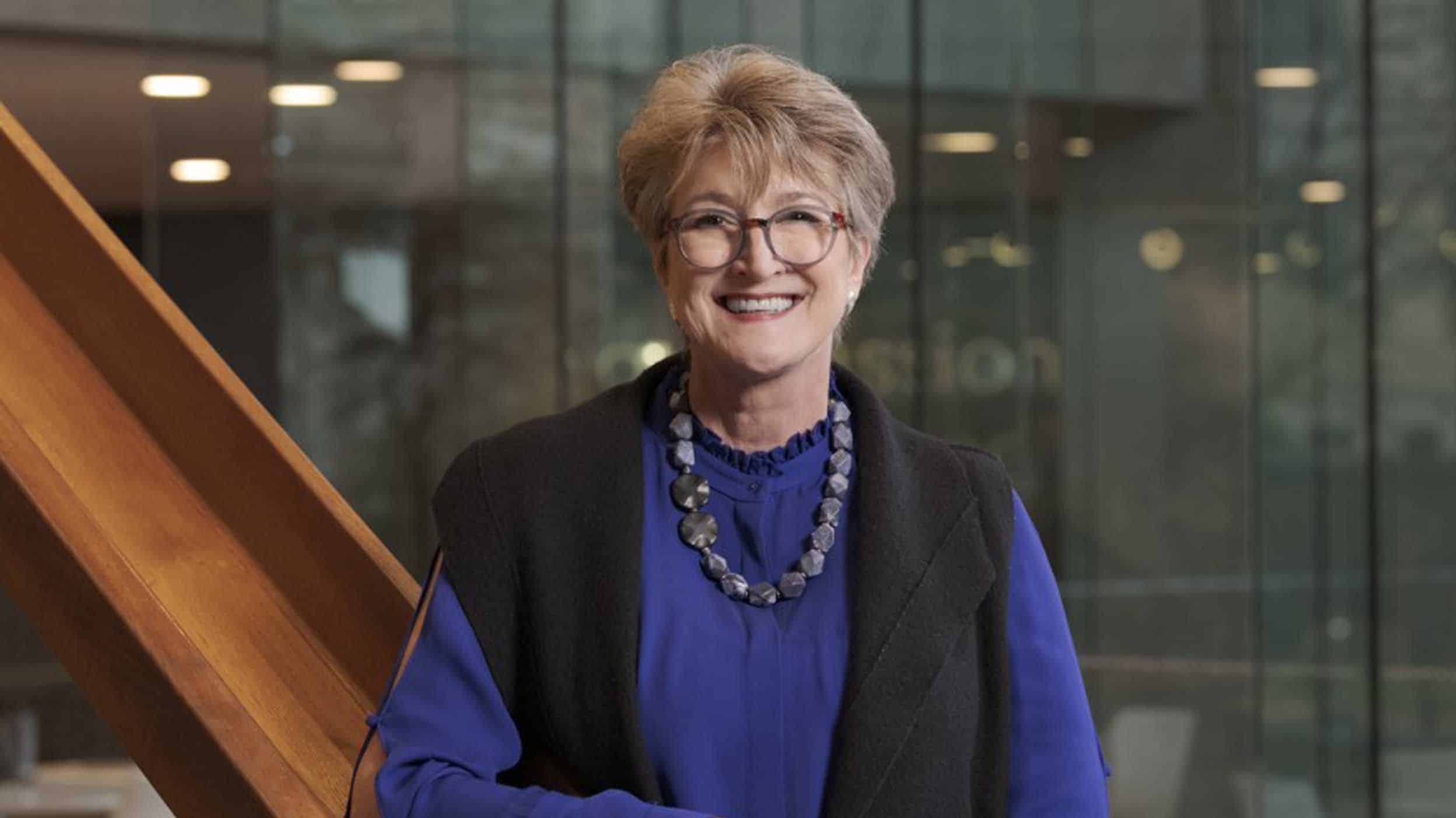
We’re passionate about
protecting our climate.
Designing a sustainable home means reducing the building’s impact on the environment. Reducing the environment’s impact on a building offers resiliency.
We design high performance houses that use less energy and conserve water. We carefully place our buildings to minimize the impact to the site by saving trees and controlling the stormwater runoff. We are always working to reduce the embodied carbon of building materials. Our houses are designed to mitigate the effects of hurricane force winds, floods, and lightning. We are participants in the AIA’s 2030 Commitment which is a strategy that gives goals for reaching net zero carbon emission in buildings.
Our clients choose the Lowcountry to experience and embrace the natural beauty found here.
Therefore we design our houses for the specific site to connect with nature. As the landscape architect Robert Marvin said, “We need to knock the walls down and let nature in again. Man needs to get out of his box that technology has created. He needs to wrap his arms around nature.”
-
We take pride in the fact that we are leaders in promoting sustainability. As architects, we are uniquely positioned in our ability to reduce the impact of buildings on the environment, and are responsible to do so.
Our firm was an early signatory of the American Institute of Architect’s 2030 Commitment, which has the mission “to support the 2030 Challenge and transform the practice of architecture in a way that is holistic, firm-wide, project based, and data-driven.” The goal of 2030 Challenge is for all new buildings and renovations to be carbon-neutral by 2030.
Jane, Michael, and Tom are all LEED (Leadership in Energy and Environmental Design) Accredited Professionals, which is a credential awarded by the US Green Building Council to denote proficiency in sustainable design and construction. We work hard to stay abreast of new technologies, material science and innovative solutions.
We use building energy modeling—a software simulation of building energy use—to analyze the efficiency of our homes. Using the information from our energy model, we can very efficiently engineer the mechanical system in house.
Many of our clients have learned that producing their own energy with rooftop solar is a sound investment, both financially and environmentally. With attractive incentives like tax credits and net-metering from the power company, the investment cost can be recovered in 7-8 years, on average.
-
Sustainable design is first, a site specific design that works with nature to reduce the amount of energy needed to heat, cool, and light the building. Next, we design a high performance building envelope to keep the hot humid air out and to prevent thermal bridging. A high performance building requires the appropriate heating, ventilation and air conditioning system (HVAC) which we design and model. Finally, for clients that are interested, we produce energy on-site with photovoltaics.
-
Beaufort County is prone to hurricanes and flooding and all of our buildings are designed to stop the building from blowing away in 140 mph winds, keep blowing rain out, and to prevent flood damage. Photovoltaics installed in conjunction with an energy storage system can provide uninterrupted use of some or all of the house’s electricity in the event of a power outage due to a storm.





















